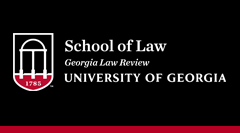Publication Date
2014
Abstract
In January of 1900, United States Supreme Court Associate Justice Henry Brown (author of Plessy v. Ferguson) had apparently just about had it with the press. He gave what was called "[t]he principal address" before members of the New York State Bar Association in Albany and focused not principally on law, but on what he called journalism's sensationalistic methods.' "Ugly stories are told," he told the gathered attorneys, "of spies put upon houses to unearth domestic scandals or upon the steps of public men to ferret out political secrets," including early reports of court decisions. The greatest of the cruelties done by journalists, in Justice Brown's estimation, were their "assaults upon private character." The worst of the publications, he complained, were those newspapers that published Sunday editions.
This Essay explores some of that early press coverage of the Supreme Court, particularly of its Justices, and it attempts to explain what could have so provoked Justice Brown. The story is personal to Justice Brown, who was of some interest to journalists of the time, but it is also much broader. A Supreme Court press corps that had once been at least somewhat compliant and respectful of the Court became more critical of both the Justices and their decisions, and more interested in them as personalities. Ultimately, this Essay argues that such a history-one that began with at least partial quiet deference and turned distinctly toward sensationalism-laid the groundwork for Justice Brown's anti- journalism speech and the distrust shown to media by today's Justices.
Recommended Citation
Gajda, Amy
(2014)
"Scandal! Early Supreme Court News Coverage and the Justice-Journalist Divide,"
Georgia Law Review: Vol. 48:
No.
3, Article 6.
Available at:
https://digitalcommons.law.uga.edu/glr/vol48/iss3/6

